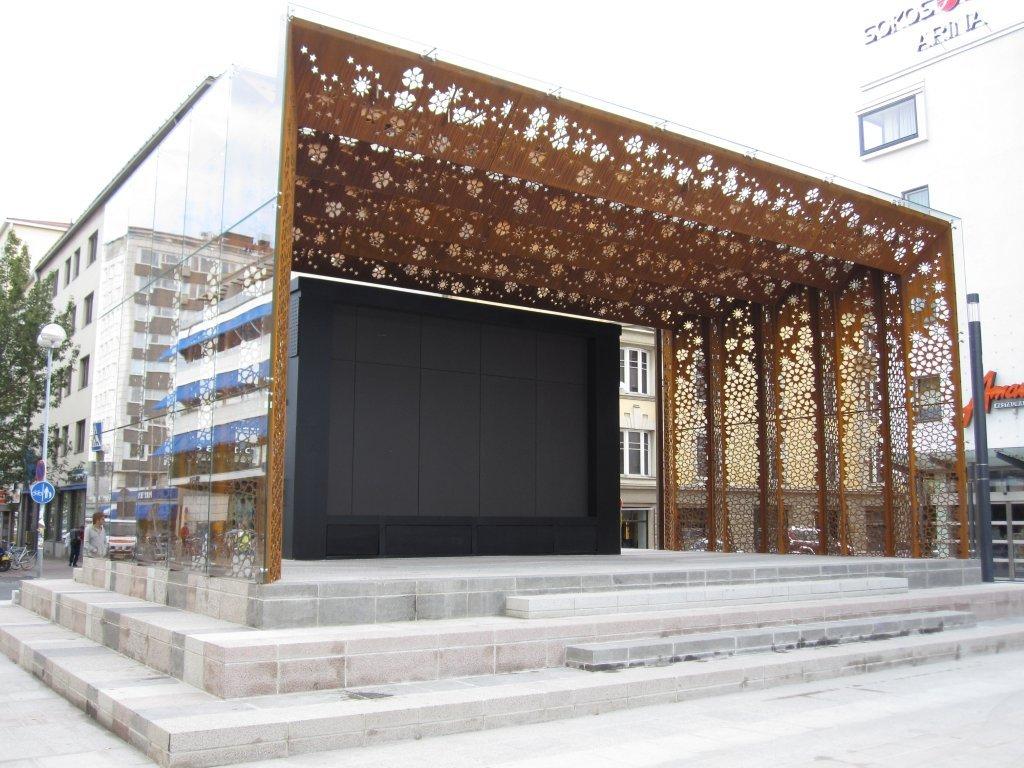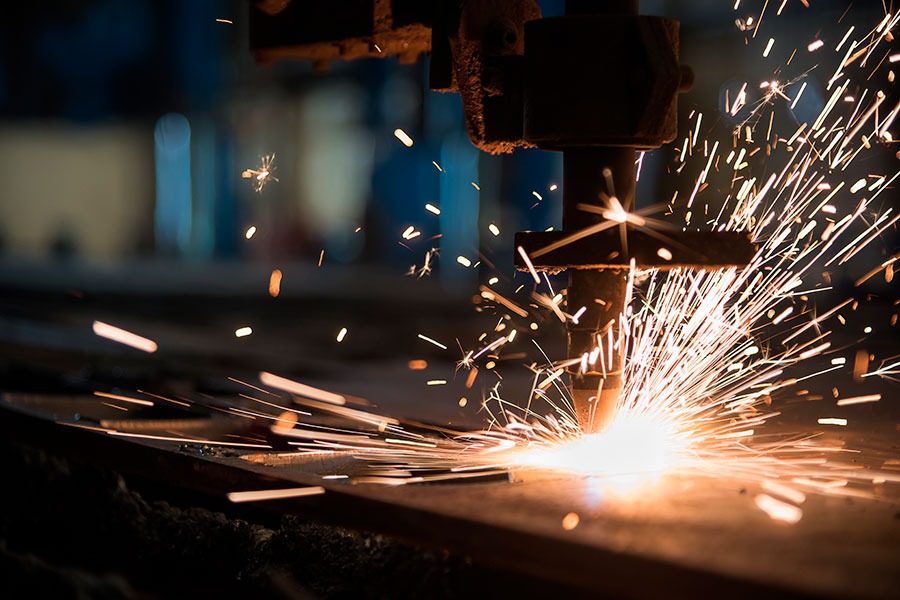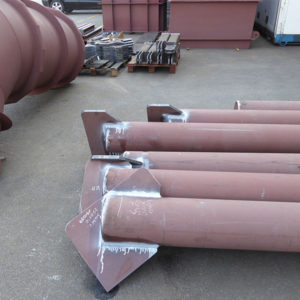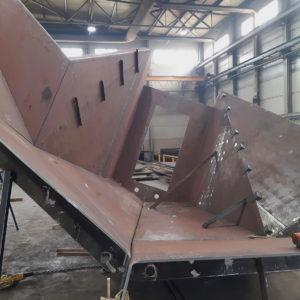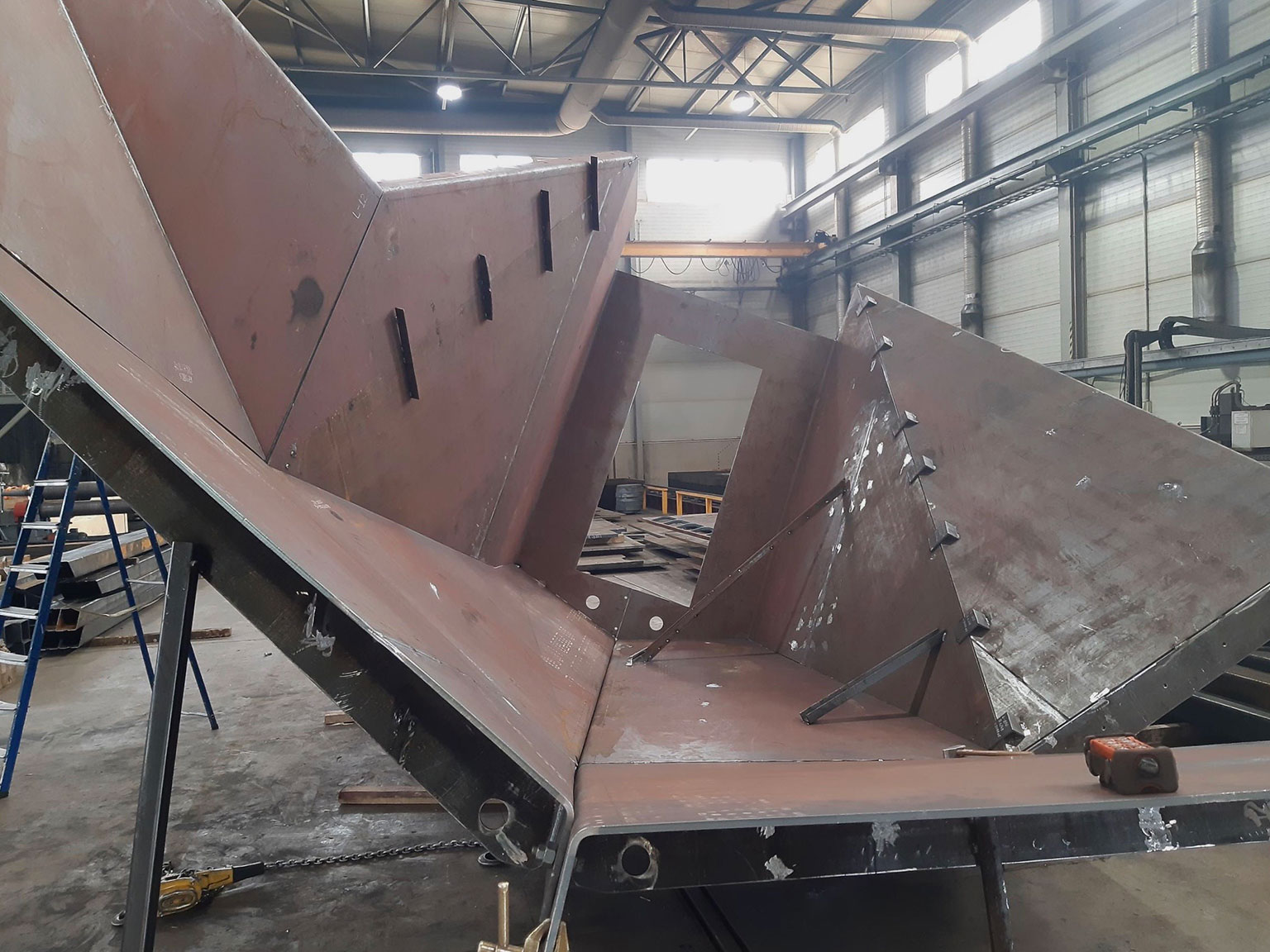General knowledge about sheet metal cutting
Removing parts of a sheet metal piece through the appliance of sheer force and cutting edges is referred to as sheet metal cutting, and it has multiple different variations.
The shear stress power that is applied to the workpiece has to be higher than the sheet metal piece strength for the whole process to work. Two of the biggest parts of this whole process are called punch and die, respectively. Punch is the part that applies the shear force and makes the cut, while die is the part that the sheet metal piece lies on.
The factor of sheet metal fracturing makes it so that there always has to be an approximately 2% clearance between the two parts to avoid unnecessary fracturing or deformation.
The exact percentage may vary depending on a number of factors, such as the exact type of operation performed, the thickness of the sheet metal piece, and so on. The amount of burr also changes depending on the clearance percentage – burr is a consequence of a cutting process, a rough edge of a sheet metal piece that was just cut.
The material thickness is also one of the definitive factors of sheet metal, and what makes it different from plate metal. While the majority of cutting operations can also be performed with plate metal, the number of potential complications quickly rises when the material thickness increases.
There are five different operation types that are considered the most common when it comes to sheet metal cutting:
- Blanking
- Slitting
- Punching
- Shearing
- Deburring and trimming
Not all of these operations are exactly self-explanatory, so it is better to go over each one of them in slightly more detail, starting with blanking.
Blanking
Blanking is a fairly common process when it comes to creating smaller details out of a bigger metal piece. As expected, the details in question are created by the appliance of the shear force, and the punch should be in the shape of a detail that is needed.
In this case, everything but the detail is considered leftovers, or scrap – and the details that you’re getting out of this process are called blanks (which is why the process is called “blanking”). The list of examples when it comes to details created by blanking includes small gears, plane washers, various automotive components, etc.
Slitting
Slitting, on the other hand, is something that is more or less a requirement for most metalworking operations. It is a process of cutting a piece of metal using two opposing circular blades, and it can be performed both automatically and manually – the majority of straight lines are performed automatically, while curved slits often need to be performed by hand.
The reason why slitting is this important to the entire metalworking process is because of how the sheet metal as a whole is transported – most of the time it arrives at the workshop in the form of a coil. In these situations, slitting needs to be performed before any other process, so that it would be easier to create something specific with that sheet metal.
Punching
Punching may seem like a simple process in comparison to the previous ones, but that is not the case at all. Punching is a process of detaching a part of a sheet metal piece using shear force, and it has a large number of variations to it – mostly depending on the shape of the piece that is created with this process.
As such, it is easier to describe each of the six main variations of punching separately – starting with piercing and lancing, and then also going for notching, slotting, nibbling and perforating.
Piercing is used
to create a single hole in a metal piece using extrusion – a combination of cutting and forming that outputs very little scrap as a result. Lancing is pretty much the same process, but it uses just one strike of a punch, and it is a common method of creating vents, louvers, tabs and other relatively small “features”.
Notching is a bit more delicate in its nature, it is mostly used on the edges of a sheet metal piece, and multiple notches are usually implied for a single metal piece – with every notch removing only a small part of the metal piece. Slotting is the simplest one here, offering only rectangular holes and using only rectangular tools for the process.
Nibbling is also a process that uses multiple punches to reach its res
ults, but this one is not restricted to the edge of the metal piece and is often used to create various complex shapes. Perforating is a process that is a bit separate from the rest, having its own machinery and its own use cases – it is a process of creating a bigger hole by creating multiple smaller holes, generally speaking.
Shearing
When it comes to comparison between different processes, shearing would be the closest to blanking, since it is also a process of turning a larger sheet metal piece into a smaller one using the shear force.
The main difference here is that blanking is pretty much a standalone process, while shearing is mostly used as a part of a bigger, more complex process of turning a basic sheet metal piece into a sophisticated detail. Shearing is also relatively simple as a process – all you have to do is to position a metal piece between the two parts of the shearing machine (the punch and the die) and then use the punch to cut the metal piece in a specific place.
Deburring and trimming
Deburring and trimming are placed in the same category because they serve a pretty much identical purpose – to clear up the burr (excessive material) that is created by the sheet metal cutting process. Both deburring and trimming are often used as one of the last parts of the production as a whole and serve little purpose in different situations.
The difference between the two is that deburring is done by hand and uses a rather small tool (usually at the size of a hand), while trimming is done using the machinery with little to no manual input.
Conclusion
Sheet metal cutting is a major classification for many different pressworking operations. Cutting operations involve the separation of the metal of the sheet in certain areas. This separation is caused by shearing forces acting on the metal through the edges of the punch and die.
Levstal’s capabilities in terms of sheet metal cutting are vast and varied, offering multiple different options and services. Our experience is further established by satisfied clients from all over the world, including Japan, Germany, North America, Belgium, Sweden, and so on. Cutting and pressing in stainless steel, aluminum and steel grades are easily ordered online. Send us your request.


